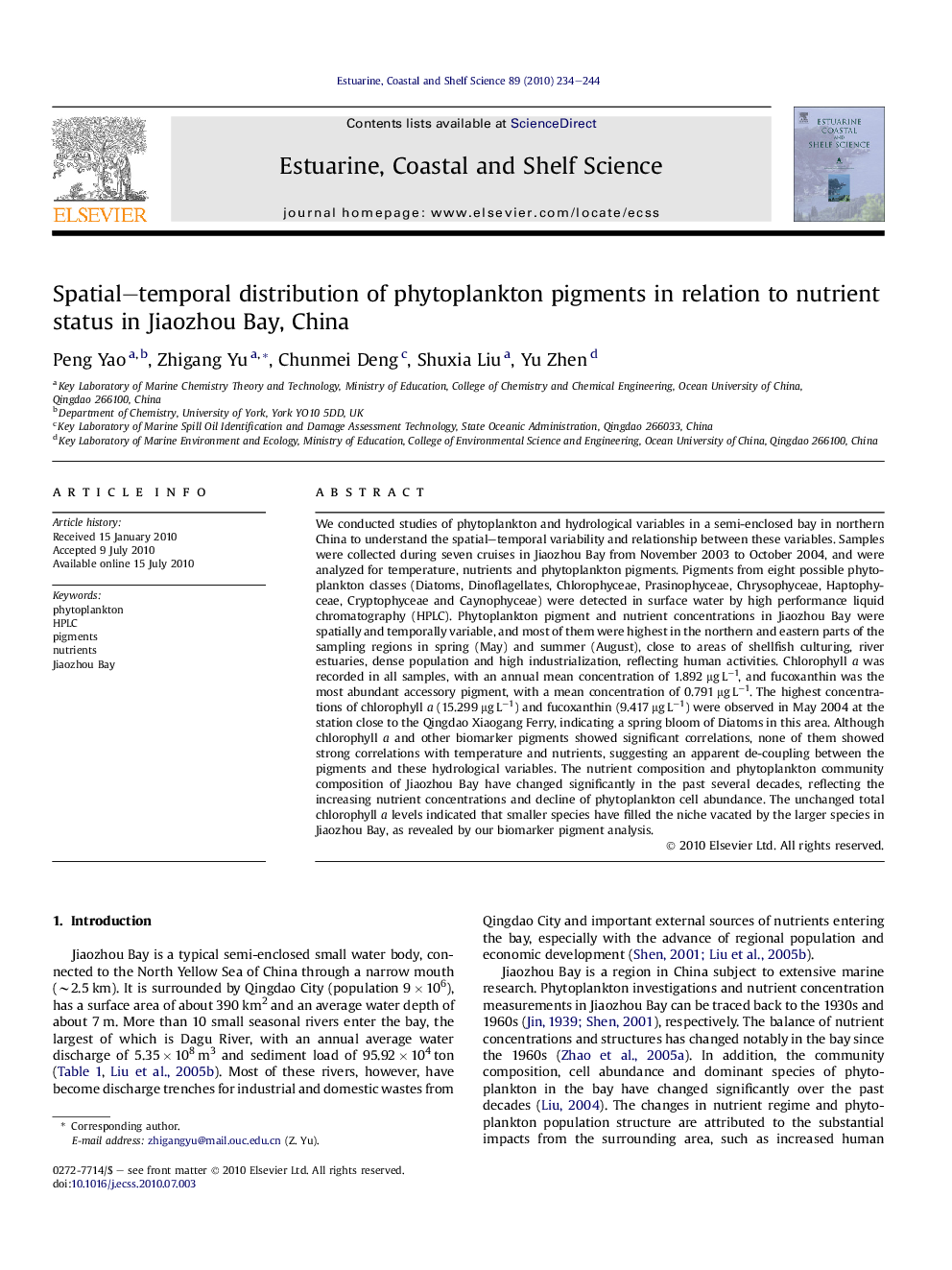| Article ID | Journal | Published Year | Pages | File Type |
|---|---|---|---|---|
| 4540766 | Estuarine, Coastal and Shelf Science | 2010 | 11 Pages |
We conducted studies of phytoplankton and hydrological variables in a semi-enclosed bay in northern China to understand the spatial–temporal variability and relationship between these variables. Samples were collected during seven cruises in Jiaozhou Bay from November 2003 to October 2004, and were analyzed for temperature, nutrients and phytoplankton pigments. Pigments from eight possible phytoplankton classes (Diatoms, Dinoflagellates, Chlorophyceae, Prasinophyceae, Chrysophyceae, Haptophyceae, Cryptophyceae and Caynophyceae) were detected in surface water by high performance liquid chromatography (HPLC). Phytoplankton pigment and nutrient concentrations in Jiaozhou Bay were spatially and temporally variable, and most of them were highest in the northern and eastern parts of the sampling regions in spring (May) and summer (August), close to areas of shellfish culturing, river estuaries, dense population and high industrialization, reflecting human activities. Chlorophyll a was recorded in all samples, with an annual mean concentration of 1.892 μg L−1, and fucoxanthin was the most abundant accessory pigment, with a mean concentration of 0.791 μg L−1. The highest concentrations of chlorophyll a (15.299 μg L−1) and fucoxanthin (9.417 μg L−1) were observed in May 2004 at the station close to the Qingdao Xiaogang Ferry, indicating a spring bloom of Diatoms in this area. Although chlorophyll a and other biomarker pigments showed significant correlations, none of them showed strong correlations with temperature and nutrients, suggesting an apparent de-coupling between the pigments and these hydrological variables. The nutrient composition and phytoplankton community composition of Jiaozhou Bay have changed significantly in the past several decades, reflecting the increasing nutrient concentrations and decline of phytoplankton cell abundance. The unchanged total chlorophyll a levels indicated that smaller species have filled the niche vacated by the larger species in Jiaozhou Bay, as revealed by our biomarker pigment analysis.
